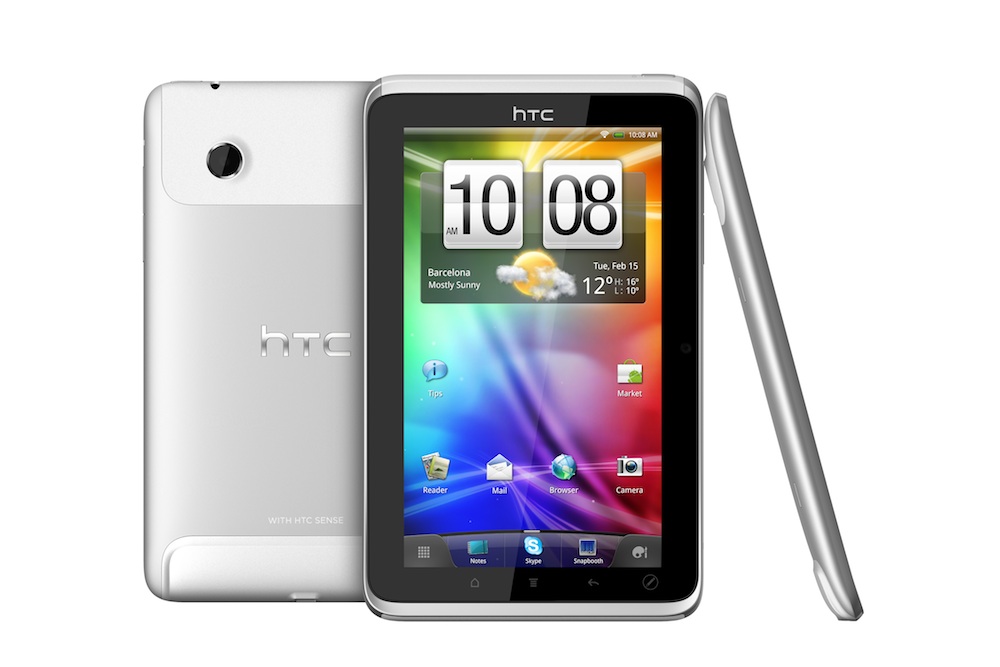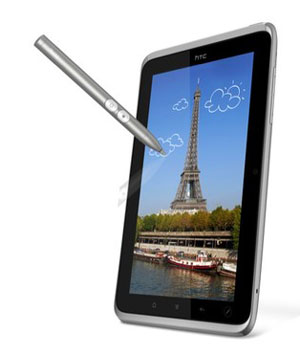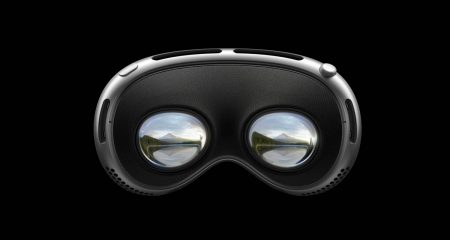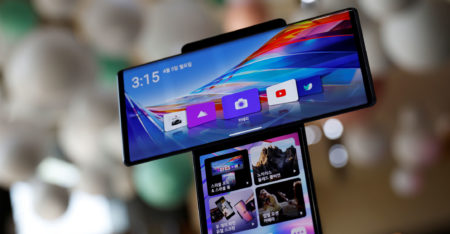
Every major mobile device manufacturer has, or is, releasing a tablet, and HTC’s first offering is the Flyer — a 7-inch Android tablet that distinctly resembles an oversized Desire HD. In fact, because the Flyer runs Android 2.3.3 (rather than the tablet-specific 3.0) and includes HTC Sense, it distinctly resembles any HTC phone running Gingerbread.
HTC have promised the Flyer’s operating system will be updated soon, and while it may seem all too familiar for someone using an HTC smartphone, the benefit of using Android 2.3 is that it’s incredibly stable and reliable. The downside is that it doesn’t always make the best use of the Flyer’s extra screen real estate. Some widgets simply appear oversized, and one is still limited to the 4×4 grid for applications or folders.
The backbone of the Flyer is its 1,5GHz Qualcomm Snapdragon processor, which makes for seamless multitasking. Unless one forcibly kills a task using either the built-in task manager of a third-party application, the Flyer will keep the last 10 applications or menus that have been accessed in memory, and switching between them is a breeze.

Web browsing functionality on the Flyer is superb. When viewing multiple Web pages, a filmstrip-type bar showing thumbnails of each can be toggled on and off, allowing one to load multiple pages simultaneously. The calendar and gallery applications make similar use of thumbnails, which is both a great use of the screen size and makes navigating the applications faster and more intuitive. Oddly, however, calendar and gallery only work in landscape orientation.
The Flyer also has rather a lot in common with Samsung’s 7-inch Galaxy tablet. Both have screens that are 2,7 inches smaller than an iPad’s and lower resolution (1024×600 as opposed to Apple’s 1024×768). Both weigh about 200g less than an iPad, both run Android, and both claim higher-resolution cameras. The Flyer is bulkier than either the Samsung or Apple products, but it feels sturdier — it’s wrapped in an aluminium shell with white plastic detailing that affords you a better grip than its competitors do, but makes it look less attractive.
Although the screen isn’t the highest resolution offering on the market, it is nevertheless excellent. The ambient light sensor does a good job of controlling brightness automatically and the screen is comfortably viewable in bright daylight. It’s also incredibly responsive, typing with one’s thumbs in portrait mode is a delight. However, in landscape mode the screen is simply too small to allow for traditional typing.

Unfortunately, despite claiming a five-megapixel camera, the Flyer takes poor still images, and equally poor video. The front-facing camera is even worse, but then that’s also in keeping with the competition. It’s useful for video calling and silly self-portraits, but not much else. But then, tablets aren’t out to make digital cameras obsolete just yet.
As one would expect from an Android device, on the whole the Flyer offers extremely good integration with Google products. The notable exception is Google Talk’s video and voice functionality that requires third-party applications. The Flyer also provides support for applications like Evernote, which is not surprising when one considers that the included “Magic Pen” stylus is clearly intended to be one of the Flyer’s differentiating features.
The stylus uses the same aluminum as the Flyer itself, and includes two function buttons. Any screen or webpage on the Flyer can be scribbled upon and saved like a screenshot, and the note-taking functionality offers an impressive array of features. However, beyond note-taking and sketch-making, there are no other discernible advantages to having a stylus.
Also, the stylus doesn’t fit into the tablet itself. And stylus-specific buttons don’t respond to touch. The downside is that if one uses the stylus heavily it has to accompany the tablet, but the upside is that HTC have included a white, leatherette, protective sleeve for the Flyer into which the stylus fits. Including a case is a great value-added feature, even if white is an impractical choice of colour.
Unlike its rivals, the Flyer doesn’t allow for the screen to be rotated all the way around. It offers only portrait mode and landscape 90 degrees to the left. In reality, this isn’t much of an impediment. A pleasing feature is the inclusion of two sets of touch buttons (home, menu, back and the pen-specific button) — one for each orientation with only the applicable set visible at a time.
HTC Flyer promotional video (via YouTube):
http://www.youtube.com/watch?v=r0pL2t2_CIw&feature=player_profilepage
There are only three physical buttons on the unit: the two volume buttons and the power/lock button, which cleverly also includes the notification LED. Various power-saving options ensure that battery life is stretched to its limits, and one of the particularly novel inclusions is a sleep mode that shuts off wireless communications and GPS between pre-assigned hours.
Even with extremely heavy use the Flyer lasted well over 12 hours, and with more moderate use it will keep going for two to three days. Though a great deal has been done to conserve power it would be pleasing to be able to turn off all of the numerous animations that occur when switching between applications or waking the device up, not just some of them.
Overall, the Flyer is a competent first foray into the tablet market by HTC. It’s sturdy, intuitive to use, incredibly fast, offers genuine multitasking, offers a brilliant display, integrates with Google with ease, and includes thoughtful accessories like a wall-socket charger, protective case, and even headphones.
Some will find it too small, and one hopes that once the kinks have been worked out of Android 3.0 we’ll see a larger offering from HTC that can fully exploit the benefits of Android scaled for the added screen size of tablets. At roughly the same dimensions as a Kindle, it’s more portable than the iPad, with a faster processor to boot, and accepts SD cards for further memory expansion, making it a compelling proposition on paper.
However, it’s the pricing that poses the greatest challenge to the HTC Flyer’s success. It’s only available in a Wi-Fi and 3G-enabled 32GB version for R6 800, which means it’s R200 more expensive than its iPad equivalent and R500 more expensive than Samsung’s offering. Unless forthcoming updates are incredibly compelling, it’s hard to see why anyone other than the brand loyal would take it over its rivals. — Craig Wilson, TechCentral
- Subscribe to our free daily newsletter
- Follow us on Twitter or on Facebook



